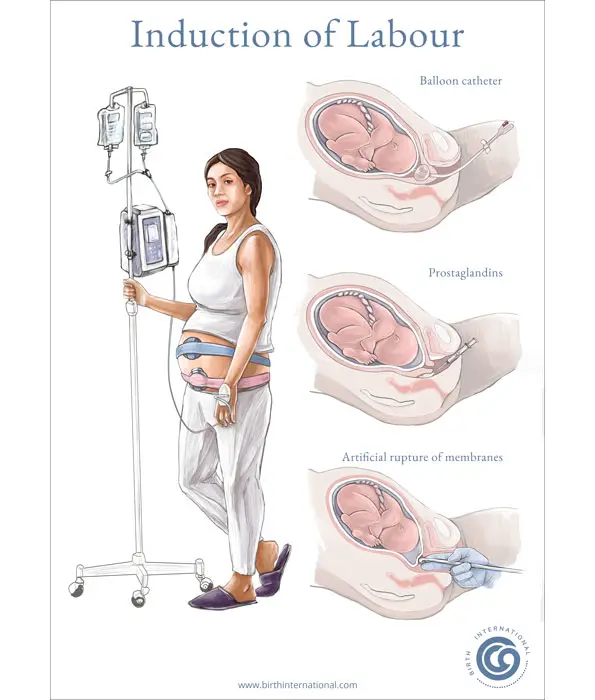


There are many ways to induce labor;
You’ve reached ۴۰ weeks, and the baby is showing no signs of being ready. Your last couple of visits to the practitioner have resulted in no change in effacement, dilation, and stage. The phone is starting to ring off the hook, with well-meaning friends and family wanting to find out any news they can. At this point, the emotional rollercoaster ride of pregnancy feels like it's ready to go off the track! You don’t want to talk to anyone, you just want the baby to come out!!!
The good news is that these days, they typically don’t let the pregnancy go past ۴۱ weeks. You may be placed on the on-call list for induction. What exactly is induction? Induction is a process which attempts to expedite the onset of labor. Two common forms of induction practiced in hospitals are the stripping of the membranes and the application of Pitocin.
In the "stripping of the membranes" technique, the practitioner places a gloved finger through the cervix and sweeps the amniotic membranes, detaching them from the lower part of the uterine cavity. This process is believed to release prostaglandins, hormonelike substances which stimulate labor. The drawback of this technique is that it can be painful and/or cause cramping.
Typically, if you have gone a week past your due date or your baby is showing signs of distress, Pitocin, a medication typically in a jelly form, may be applied to the cervix. Pitocin helps induce uterine contractions, augment labor, and control bleeding. Possible risks include increased discomfort, fetal stress, and uterine rupture.
When you are past due, waiting is the hardest part, and some couples are willing to try some natural techniques to help induce labor. Discuss these techniques with your practitioner to ensure the safety of the mother and baby.
Walking is one of the best things you can do. Walking not only provides an opportunity for the mother to get some exercise, but it also allows the baby’s head to turn into the proper position for the birthing process. Walking upright also allows gravity to aid in moving the baby’s head further down into the birth canal.
Sex is also a common and good way to move the process along. It may feel clumsy due to the mother’s big body, but it may be the last opportunity for six weeks as the mother heals from the birthing process. Semen from the male contains prostaglandins which can help stimulate contractions.
Stimulation of the nipples releases oxytocin, the natural form of the synthetic drug Pitocin, which helps cause contractions.
Eating spicy foods has been sworn to work for some people, but is mostly an old wive’s tale with no statistical or scientific research to back up its claim.
Drinking castor oil is a technique that has been around for a long time. The taste is very unpleasant and is said to work by causing intestinal spasms which may cause uterine cramping, stimulating contractions.
Herbal remedies such as blue and black cohosh are often used, especially by midwives to stimulate and strengthen contractions.
Relaxation can do wonders for the body. As much as you want the event to happen, it likely will be a long and painful process. Relaxing will help rest your body for its upcoming task, and may also help speed up the process by reducing stress.
Be sure to discuss any natural induction techniques with your practitioner, and remember, though it may seem like it, the baby will be coming, soon!
Note: Please also check your spam or junk email folder.